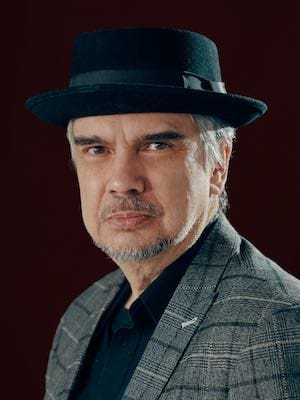The Kansas House Appropriation Committee debated on March 15 if the population of 500 wild hogs should be controlled by using gunmen in helicopters.
During the debate, state Rep. Virgil Peck Jr. (R-Tyro) said, “If shooting these immigrating feral hogs works, maybe we have found” a solution “to our illegal immigration problem.”
Later, shrugging off his remarks as a joke, Peck offered a half-hearted apology by claiming, “I was just speaking like a southeast Kansas person.”
Such “humor” fails to amuse, especially when we consider the anti-Hispanic rhetoric that permeates the present immigration debate.
Consider the “solution” to immigration advanced by Brian James, a talk radio host with KFYI-AM in Phoenix. He said in 2006: “What we’ll do is randomly pick one night every week where we will kill whoever crosses the border … step over there and you die. You get to decide whether it’s your lucky night or not.”
James added he would be “happy to sit there with my high-powered rifle and my night scope.”
Peck’s comments are chilling against the backdrop of openly advocated violence faced not only by undocumented immigrants, but also by U.S. citizens.
Nicholas Hausch, an 18-year-old from Long Island, N.Y., pleaded guilty to second-degree attempted assault as a hate crime for the stabbing of a 37-year-old Ecuadorean named Marcelo Lucero by one of his companions. The boys confessed to going out that evening for “beaner hopping.”
Testifying before the New York State Supreme Court, Hausch described the game “beaner hopping” to a packed courtroom. “It’s when you go out and you look for a Hispanic to beat up,” he said.
We shouldn’t be surprised that, according to FBI statistics, anti-Latino and Latina hate crimes increased 40 percent between 2003 and 2007 – the same period that politicians started using anti-immigration platforms to garner votes for elections.
Prior to this rise in Hispanic hate crimes, the typical, if condescending, impression of Hispanics was that they were hard workers. Now, they are dangerous lazy criminals set on violating and destroying the American way of life.
As former Republican Congressman and 2008 presidential candidate Tom Tancredo succinctly put it, “Many who enter the country illegally are just looking for jobs, but others are coming to kill you, and you, and me, and my children and my grandchildren.”
The anti-immigrant rhetoric may be aimed against nondocumented Latin Americans crossing the border, but in the minds of the general population, distinctions between a Latin American and a U.S. Hispanic may remain unnoticeable.
Among the last things the properly documented Ecuadorean Lucero heard before dying were racial epithets about him being Mexican.
Clearly, among those expressing anti-Hispanic sentiments, not only do all Latinos and Latinas look alike (e.g., Mexicans and Ecuadoreans), but they also don’t belong (undocumented or documented).
Whether born in the United States or arriving decades ago from Latin America, some of us now live in a culture of fear fueled by anti-immigration rhetoric.
Knowing that potential perpetrators of hate crimes don’t distinguish between a U.S. Hispanic and an undocumented Latin American reminds all of us that we continue to live on the borders.
To live on the borders can mean literally living in cities located along this artificial 1,833-mile line separating the United States from Latin America, separating the so-called First World from the Two-Thirds World.
The borderlands are more than just a geographical reality; they also symbolize the existential reality of U.S. Latinas and Latinos.
Most Hispanics, regardless of where they are located or how they or their ancestors found themselves in the United States, live on the borders. Borders separating Latinas and Latinos from other Americans exist in every state, every city and almost every community, regardless of how far away they may be from the 1,833-mile line.
To be a U.S. Hispanic is to live constantly on the border – that is, the border that separates privilege from disenfranchisement, power from marginalization, whiteness from “colored.”
Most U.S. Hispanics, regardless of where they live, exist in the dangerous space we call borderlands. To live on the borders throughout the United States means separation from the benefits and fruits society offers its inhabitants.
Peck may jokingly suggest that shooting Hispanics might be an effective way of “thinning the herd.” What is not funny is that such violence is really not needed because it already exists in the form of institutionalized violence manifested in political, social and economic ways.
Yes, I am more afraid now than I ever was of walking the streets of major U.S. cities at night lest I become the target of “beaner hoppers.”
But I am also afraid of how the social structures continue to be changed to maintain and expand the suppression and oppression of Latinas and Latinos.
I am truly afraid being a Hispanic in the United States.
Miguel A. De La Torre is professor of social ethics at Iliff School of Theology in Denver.
Professor of Social Ethics and Latinx Studies at Iliff School of Theology in Denver, Colorado, and a contributing correspondent at Good Faith Media.

